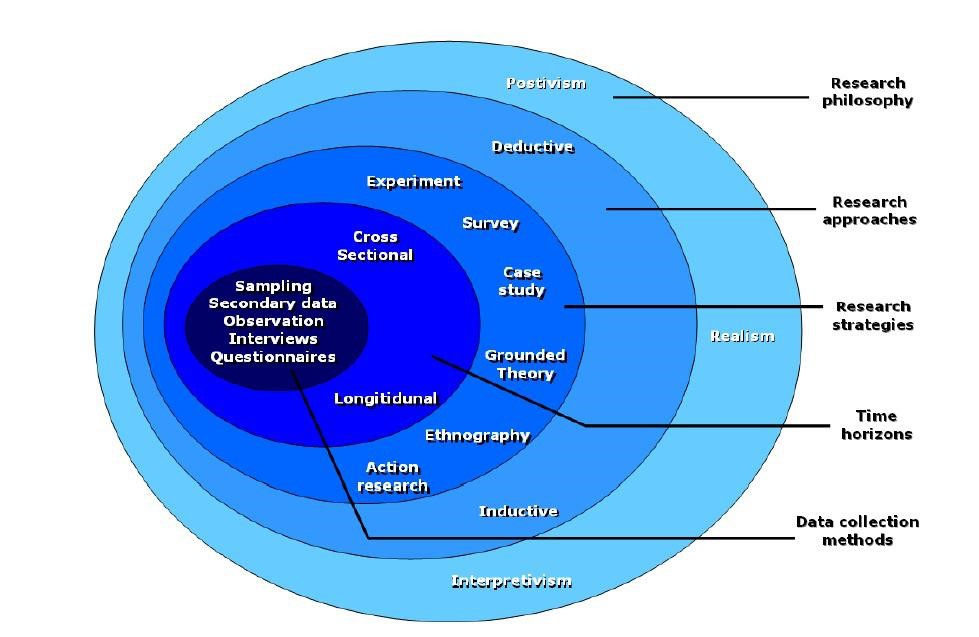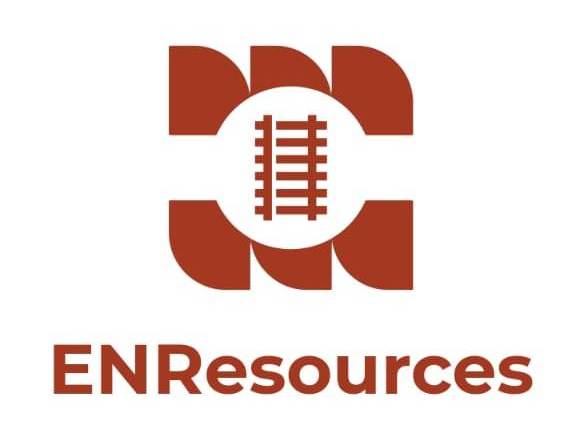
Photo by RDNE Stock project on Pexels
Introduction
The methodology chapter of a dissertation is one of the most important and complex sections of the entire paper. This chapter outlines the methods that you used to conduct your research, including the research questions, design, data collection, and analysis procedures. It is essential to ensure that this chapter is detailed and comprehensive, as it provides a clear understanding of how you arrived at your final results. In this article, we will discuss the main components of the methodology chapter and how to present them effectively.
1. Research questions and hypotheses

Photo by Oleksandr Pidvalnyi on Pexels
The first step in developing your methodology chapter is to clearly define your research questions and hypotheses. This involves formulating concise and focused inquiries that address the core objectives of your study. By establishing these research questions, you lay the foundation for a structured and systematic approach to your research. Once you have defined your research questions and hypotheses, the next crucial task is to determine the appropriate research design and data collection methods to employ. The research design refers to the overall strategy or plan that outlines how you will gather and analyze data to answer your research questions. It is essential to choose a design that aligns with the nature of your study and allows for accurate data collection and analysis. Your choice of research design will heavily influence the selection of data collection methods. These methods can include surveys, interviews, observations, experiments, archival research, or a combination of several techniques. It is essential to justify why you have chosen these specific methods and how they will enable you to obtain the necessary data to answer your research questions effectively.
When explaining your choice of research questions and their relevance to your research topic, you should provide a clear rationale. This involves highlighting the significance of your research questions within the broader context of your field of study. You can discuss how your research questions address gaps in existing literature, contribute to theoretical frameworks, or offer practical implications for real-world applications. Furthermore, it is crucial to establish logical connections between your research questions, hypotheses, and research topic. This demonstrates the coherent progression of your study and emphasizes the relevance of your research questions in addressing specific aspects of your research topic. By thoroughly defining your research questions and hypotheses and explaining their relationship to your research topic, you ensure a robust and well-justified methodology chapter. This clarity and coherence lay the groundwork for the subsequent steps in your research, enabling you to conduct a comprehensive and rigorous investigation.
2. Research design

Photo by Alexander Suhorucov on Pexels
Next, in order to provide a comprehensive overview of your study, it is essential to delve into the details of your research design. This involves articulating the specific research method employed, which could fall under the categories of qualitative, quantitative, or mixed-methods research. Elucidating why you opted for this particular method and its alignment with your research questions is crucial. By doing so, you can shed light on the rationale behind your choice and highlight how this method facilitates addressing your research inquiries effectively. Additionally, this section should encompass a thorough description of your sampling strategy, delineating the approach you used to select participants or data sources for your study. Expound on the factors that influenced your sampling decisions, such as the population of interest, its feasibility, and the extent to which it aligns with your research objectives.
Moreover, it is imperative to provide a comprehensive rationale for determining the appropriate sample size, accounting for statistical considerations, practical constraints, and the overall goals of your research. By meticulously detailing your research design, including the research method, its alignment with your research questions, the sampling strategy employed, and the justification for your sample size, you will establish a solid foundation for the subsequent sections of your study and enhance the clarity and validity of your research findings.
3. Data collection

Photo by Tima Miroshnichenko on Pexels
Once you have established your research design, a crucial step is to elucidate the data collection process comprehensively. This section plays a pivotal role in shedding light on the materials and instruments employed to gather the necessary data, which may include surveys, interviews, or observations. By providing a detailed explanation of these components, you offer readers a clear understanding of how you obtained the data that informs your research. When discussing the materials used for data collection, it is important to mention the specific tools or resources utilized. For instance, if surveys were employed, you could specify whether they were paper-based or administered online through a survey platform. In the case of interviews, you might describe the interview protocol, including the questions asked and the format of the interviews (e.g., face-to-face, phone, or video calls). In the instance of observations, you would detail the settings observed, the duration of the observations, and any specific criteria used to guide the process.
Moreover, within this section, it is crucial to address any challenges or issues encountered during the data collection phase. These could include difficulties in obtaining participant consent, technical problems with data recording equipment, or unanticipated disruptions during observations. By acknowledging and addressing these issues, you demonstrate your ability to adapt and find solutions, which enhances the credibility and reliability of your research. When highlighting the challenges encountered, it is important to provide a comprehensive account of how you overcame or mitigated them. This could involve implementing alternative data collection methods, revising the research protocol, or obtaining additional resources or support. Sharing these details not only demonstrates your problem-solving skills but also allows readers to assess the potential impact of these challenges on the validity and reliability of your data. In summary, the section devoted to explaining the data collection process should offer a thorough explanation of the materials and instruments utilized, such as surveys, interviews, or observations. Additionally, it should address any obstacles encountered and detail the strategies employed to resolve them, thereby assuring the reader of the rigor and quality of your research.
4. Data analysis

Photo by Lukas on Pexels
After collecting your data, which could be obtained through various methods such as surveys, interviews, or experiments, the next crucial step in your research process is to meticulously analyze it in order to derive significant and insightful conclusions. The data analysis section of your methodology chapter plays a pivotal role in accomplishing this task by providing a comprehensive description of the procedures employed to examine and interpret the collected data.The analysis process encompasses a range of techniques and methodologies tailored to the specific nature of your data and research objectives. Statistical tests are often employed to quantify and identify patterns, correlations, or significant differences within the data set. These tests may involve measures such as t-tests, chi-square tests, regression analysis, or analysis of variance (ANOVA), depending on the type of data and research questions at hand. Statistical analysis allows you to uncover relationships, trends, or associations within the data, providing quantitative evidence to support your conclusions.
In addition to statistical tests, qualitative approaches like thematic analysis and content analysis are commonly used when dealing with non-numerical data, such as textual or visual materials. Thematic analysis involves identifying recurring themes or patterns within the data, helping to uncover underlying meanings or interpretations. Content analysis, on the other hand, focuses on systematically categorizing and coding data to identify specific patterns or trends within the content itself. These qualitative methods can provide rich and nuanced insights into the data, allowing for a deeper understanding of the research phenomenon.
When discussing the choice of analysis methods in your methodology chapter, it is important to provide a rationale for your selection. Explain why these particular techniques align with your research objectives and questions. For instance, statistical tests may be suitable when you aim to measure the impact of certain variables or compare groups, while thematic or content analysis may be appropriate if you seek to explore complex themes or uncover underlying meanings. By justifying your choices, you establish the credibility and rigor of your research methodology. Overall, the data analysis section of your methodology chapter serves as a roadmap for how you navigate and make sense of your collected data. By describing the analytical procedures, statistical tests, and thematic or content analysis methods employed and providing a rationale for their selection, you ensure that your research findings are grounded in sound methodology and contribute meaningfully to your research objectives.
5. Ethical considerations

Photo by Towfiqu barbhuiya on Pexels
Finally, it is essential to thoroughly address any ethical considerations that were pertinent to your study. These considerations encompass a range of issues, including confidentiality, informed consent, and potential harm to participants. It is imperative to provide a comprehensive and detailed explanation of the measures taken to mitigate these risks and ensure that your study was conducted with the utmost ethical integrity. Regarding confidentiality, it is crucial to outline the steps taken to protect the privacy and anonymity of participants. This may involve the use of pseudonyms or codes to replace identifying information, secure storage of data, restricted access to the information, and adherence to data protection regulations or institutional guidelines.
Informed consent plays a vital role in ethical research. It is imperative to elucidate how participants were fully informed about the purpose, procedures, potential risks, and benefits of the study before giving their voluntary consent to participate. The process of obtaining informed consent should be described, including how participants were given the opportunity to ask questions and withdraw from the study at any point without facing adverse consequences. Additionally, it is essential to acknowledge and address any potential harm that participants might have experienced during the study. This could include physical, psychological, emotional, or social harm. To ensure participant well-being, describe the precautions taken to minimize and manage these risks. This may involve measures such as implementing safety protocols, providing appropriate support resources, conducting regular check-ins, or offering debriefing sessions to address any concerns or distress that may have arisen during the study.
Furthermore, it is crucial to highlight any additional ethical considerations that may be relevant to your specific study. These could include issues such as power imbalances, conflicts of interest, or cultural sensitivities. Detail any strategies employed to navigate these ethical challenges, ensuring that participants' rights, dignity, and well-being were upheld throughout the research process. By providing a comprehensive explanation of the ethical considerations addressed in your study, along with the steps taken to mitigate risks and ensure ethical conduct, you demonstrate a commitment to upholding the principles of research integrity and safeguarding the rights and welfare of your study participants.
Methodology Chapter of a Dissertation Based on Saunders Research Onion Model
The methodology chapter of a dissertation is the most crucial section, as it explains the methods used to conduct the research. In order to create a well-structured and comprehensive methodology chapter, it's vital to follow the Saunders Research Onion Model, which divides the research process into various layers. This model helps researchers identify the research questions, select a research strategy, design the methodology, and analyze the findings.

Saunders Research Onion (Saunders, Lewis & Thornhill 2016)
1. The First Layer
The first layer of the Research Onion Model is the philosophy of the research, which involves the underlying principles or theoretical frameworks that guide the research. This layer determines the methodology and methods used to collect and analyze data. In this section, the researcher should explain and justify the philosophical approach used to conduct the study. For instance, the researcher may choose to adopt a positivist or interpretivist approach, depending on the nature of the research.
2. The Second Layer
The second layer is the approach used to conduct the research, which can be either deductive or inductive. The deductive approach involves testing hypotheses, while the inductive approach involves collecting data and developing theories from the collected data. The researcher should describe the approach selected and explain the reasons for the selection.
3. The Third Layer
The third layer is the research strategy, which involves the overall design and structure of the research. This section describes the methods of data collection, data analysis, and sampling techniques used in the study. The research strategy chosen should be based on the research questions and objectives.
4. The Fourth Layer
The fourth layer is the data collection methods used in the research. This section explains the selection of data collection methods such as surveys, interviews, observations, or experiments. The researcher should justify the selection of these methods and explain how they were used to gather data for the study.
5. The Fifth Layer
The fifth layer is the data analysis methods used in the research. This section explains the methods used to analyze the collected data, such as statistical analysis or content analysis. The researcher should describe how the data was analyzed and provide a justification for the chosen methods.
6. The Final Layer
The final layer of the Research Onion Model is the interpretation of the findings. This section involves interpreting the results of the study and providing a conclusion based on the results. The researcher should explain the findings and provide a discussion of their implications. The researcher should also provide the limitations of the study, its generalizability, and areas for future research.
7. Conclusion
In conclusion, the methodology chapter of a dissertation plays a vital role in guiding the research process. By following the Saunders Research Onion Model, researchers can create a comprehensive and well-organized methodology chapter that explains the methods used to conduct the study. The methodology chapter should also provide a justification for the research philosophy, approach, strategy, data collection and analysis methods used, and interpretation of the findings. This will enable the readers to evaluate the validity and reliability of the research.

Photo by Kindel Media on Pexels
Are you an international student pursuing your dissertation in the United Kingdom? Need free guidance, support, or answers to your dissertation-related questions? Look no further!

About the Author

Emmanuel has over 20 years of experience as a freelance research writer, project manager, and business development professional. He has a strong background in delivering high-quality research-based content across various industries. His writing style is versatile, allowing him to adapt to different subjects and formats, including academic papers, market research reports, and business proposals. You can find inspiring educational and career resources in areas like career readiness, dissertation writing, employability skills, global entrepreneurship, and much more on his blog site.
References:
- Bryman, A., & Bell, E. (2015). Business research methods. Oxford University Press.
- Roberts, C.M. (2014). The dissertation journey a practical and comprehensive guide to planning, writing, and defending your dissertation. Thousand Oaks Corwin Press.
- Rose, M. (2012). The PhD journey: A guide for research students. Allen & Unwin.
- Saunders, M., Lewis, P., & Thornhill, A. (2016). Research methods for business students. Pearson Higher Ed.
- Schmieder-Ramirez, J., & Mallette, L. A. (2018). The psychology research handbook: A guide for graduate students and research assistants (2nd ed.). Sage Publications.
- Sekaran, U., & Bougie, R. (2016). Research methods for business: A skill-building approach. John Wiley & Sons.
- Swales, J. M., & Feak, C. B. (2012). Academic writing for graduate students: Essential tasks and skills (3rd ed.). University of Michigan Press
- Terrell, S.R. (2022). Writing A Proposal For Your Dissertation: guidelines and examples. S.L.: Guilford.
- Thomas, G. (2013). How to do your research project: A guide for students in education and applied social sciences. Sage Publications.
- Walliman, N. (2020). Your Research Project: Designing, Planning, And Getting Started. Los Angeles: Sage.


